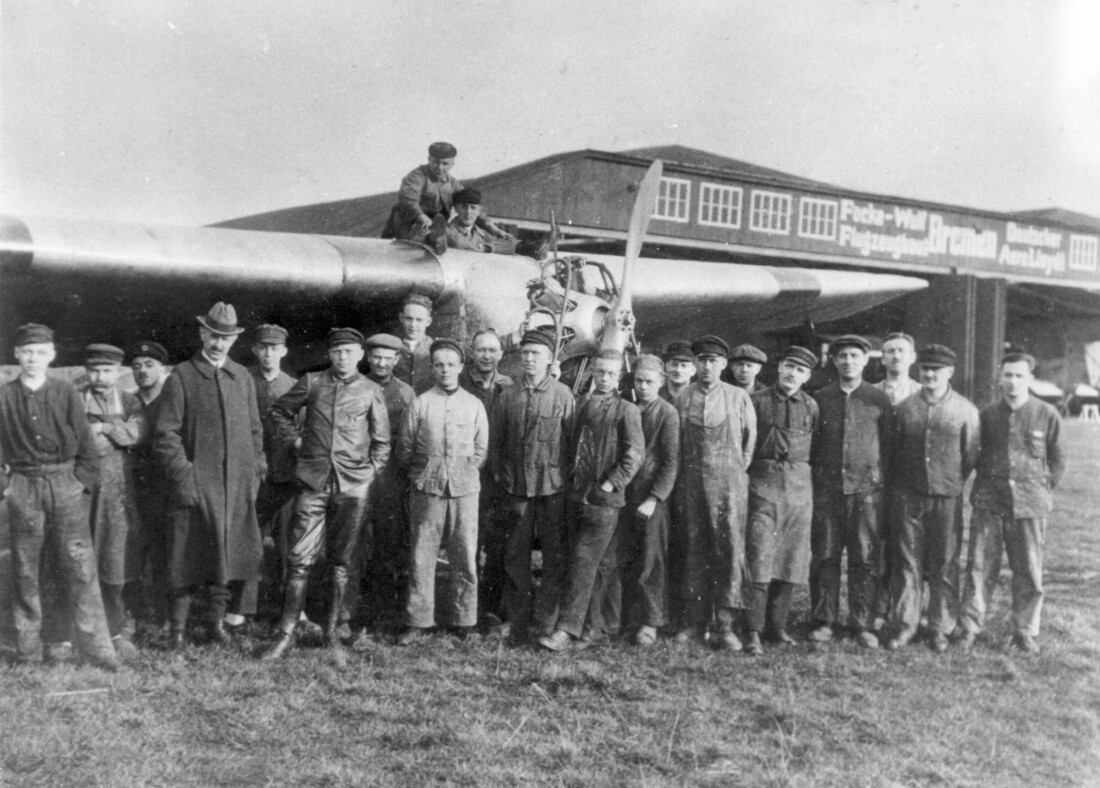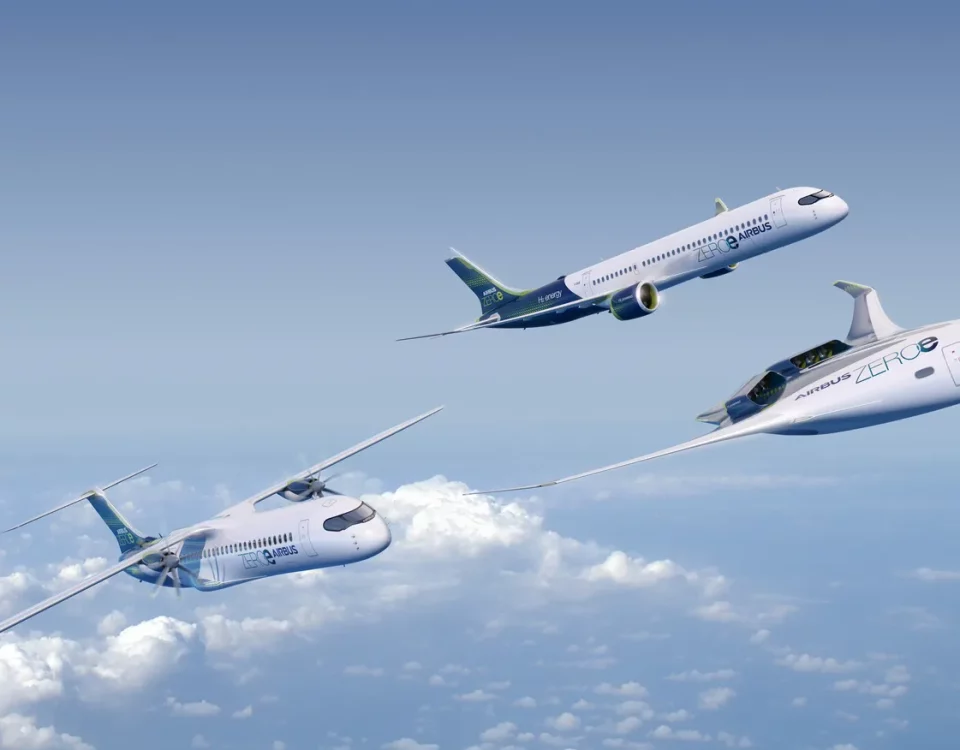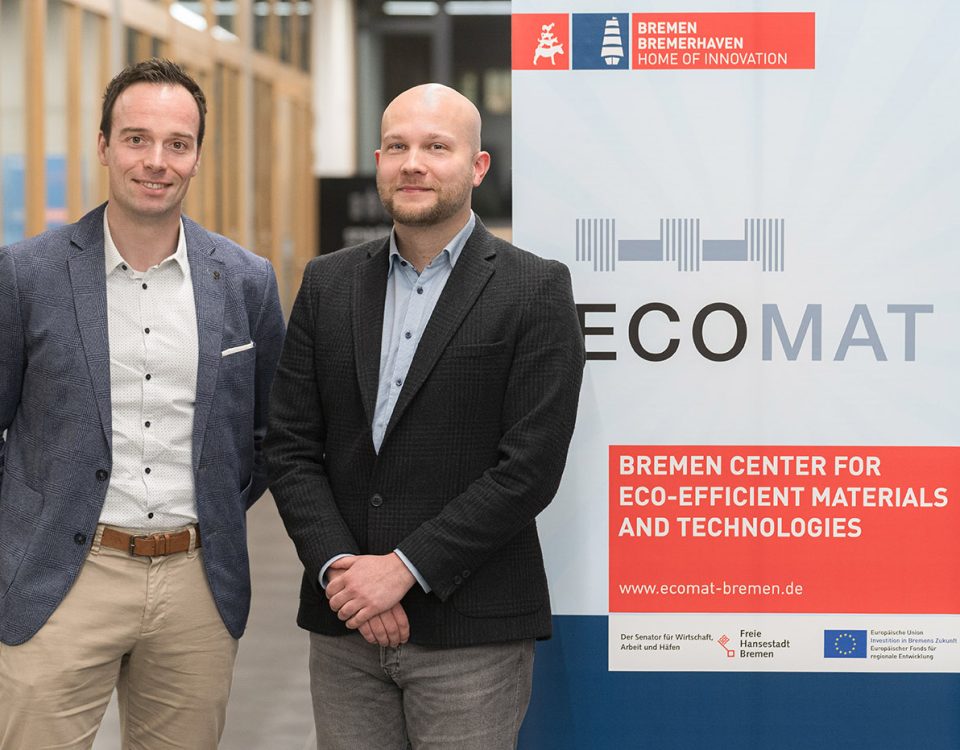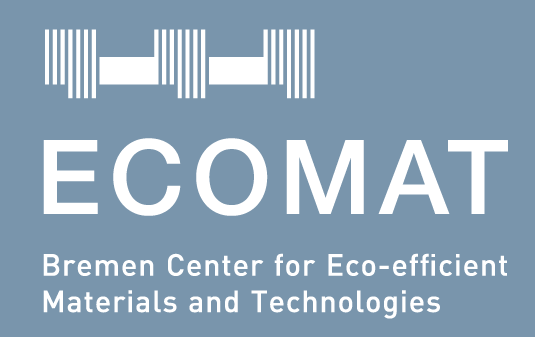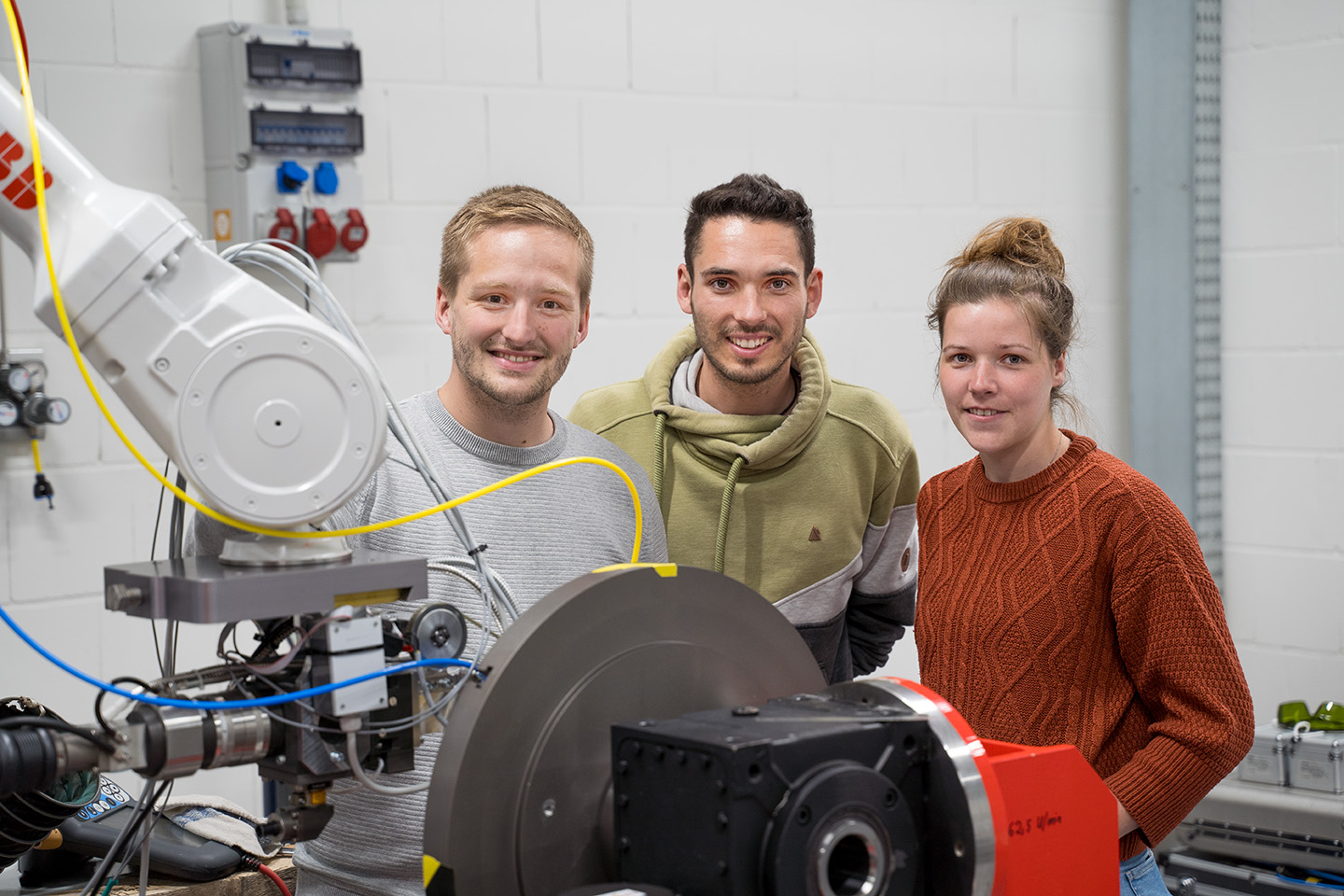
Next Green Aircraft: In Bremen, new welding processes are being developed for the aircraft of tomorrow
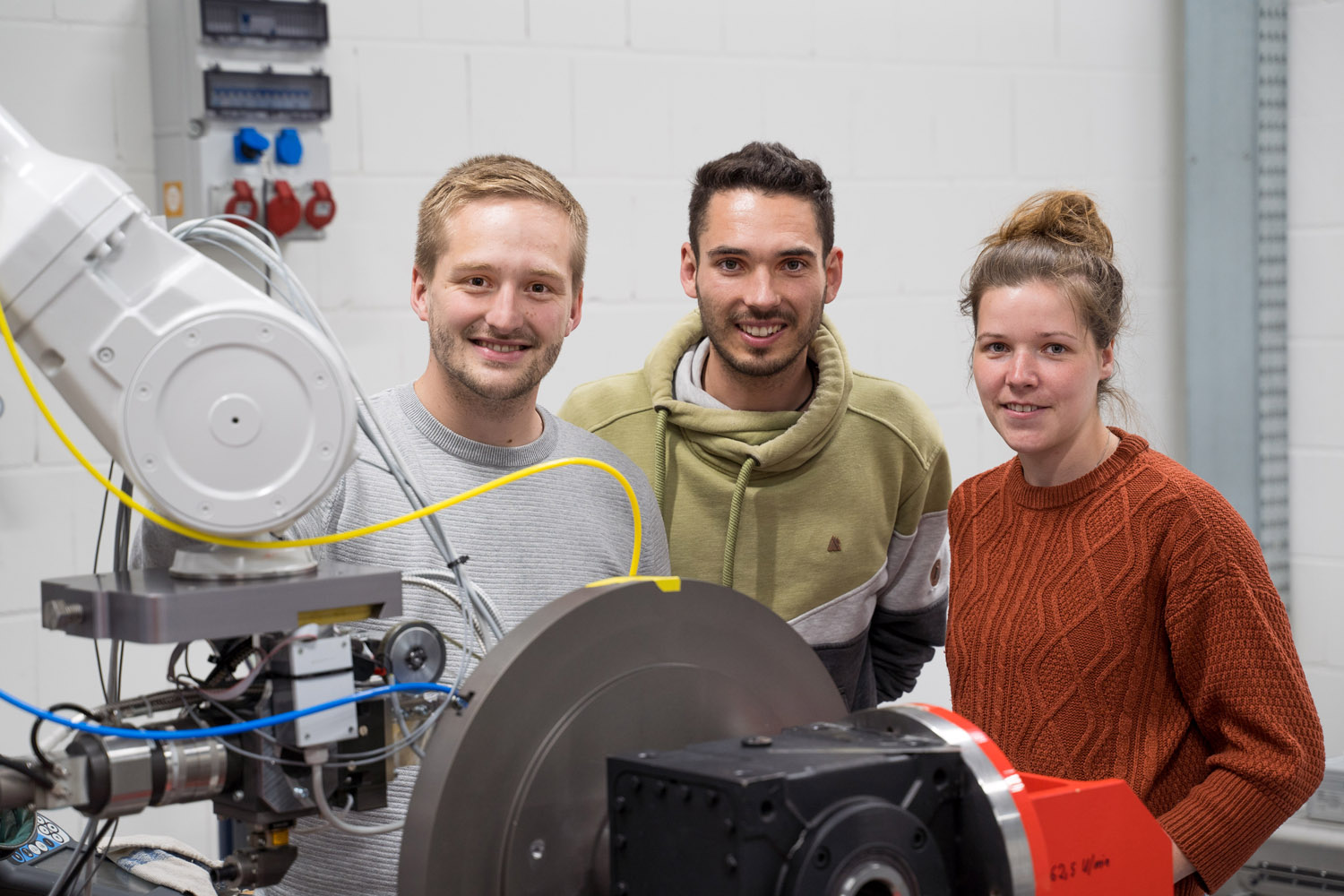
Thorsten Mattulat, Marcel Möbus and Anika Langebeck from the project team in front of the welding robot, picture: WFB/Raveling
Aircraft will fly on hydrogen in the future. To do so, they will need tanks and pipelines capable of withstanding extreme conditions. Bremen Institute for Applied Beam Technology (BIAS) has now teamed up with Airbus to develop new system technology for laser beam welding that could form the foundation for future generations of aircraft.
In 2035, Airbus plans to fly the first aircraft powered by hydrogen. Already today, the aerospace corporation is conducting research on this under the heading of "ZEROe".
Tank systems are a critical component. This is because the in-flight stresses caused by cryogenic hydrogen (cooled down to -253 degrees Celsius) impose high demands on the piping, particularly on the connecting segments. Only if they seal reliably can aircraft fly safely.
Today, pipes can already be joined automatically using laser beam welding. Industrial robots with laser optics, a shoebox-sized tool at the end of the robot arm, use laser beams specifically to temporarily heat the tubes and then join them permanently.
"Laser beam welding guarantees a consistent, precise and low-distortion weldseam. It also allows for economical working and has become an integral part of aircraft construction," says Thorsten Mattulat, Head of Department “Joining and Powder Bed Processes” at BIAS. The Bremen-based institute specializes in laser applications in materials processing and optical metrology.
Automated welding in difficult-to-reach areas
With highly complex hydrogen tank systems, however, laser welding robots come up against their limits since numerous tubes are accommodated on each tank in a very confined space in the aircraft. For a robot arm in aircraft production, it is quite a demanding task to weld all around each tube on such a tank system, because other tubes or attachment parts quickly get in the way of the laser beam.

A swivelling mirror head on the laser optics of a welding robot - new process variant made in Bremen, Photo: WFB/Raveling
As a result, Airbus and BIAS teamed up in the fall of 2022 to develop a new system technology capable of handling the delicate task by June 2023.
The result was a new process variant of "laser orbital welding": “We use a swiveling mirror system that deflects the laser beam from the optics and thus gives the robot greater freedom of movement”, explains Mattulat. By pivoting the mirror head on the laser optics, the laser beam can be deflected in such a way that up to 180 degrees of a tube can be covered from one position of the robot arm. The robot arm can therefore weld a pipe all the way around a joint from 2 or 3 fixed positions instead of having to go completely around the pipe.
Unique process made in Bremen
"This is a globally unique and completely new process," says Mattulat, who led the project at BIAS. At the heart of the research project, called "LH2-Tank," was proving the new laser welding process on an industrial scale. "We succeeded in validating the process, in other words, proving that it works," he is pleased to report. The mirror swivel head was developed and manufactured independently at BIAS - and is a further development of existing processes with new components.
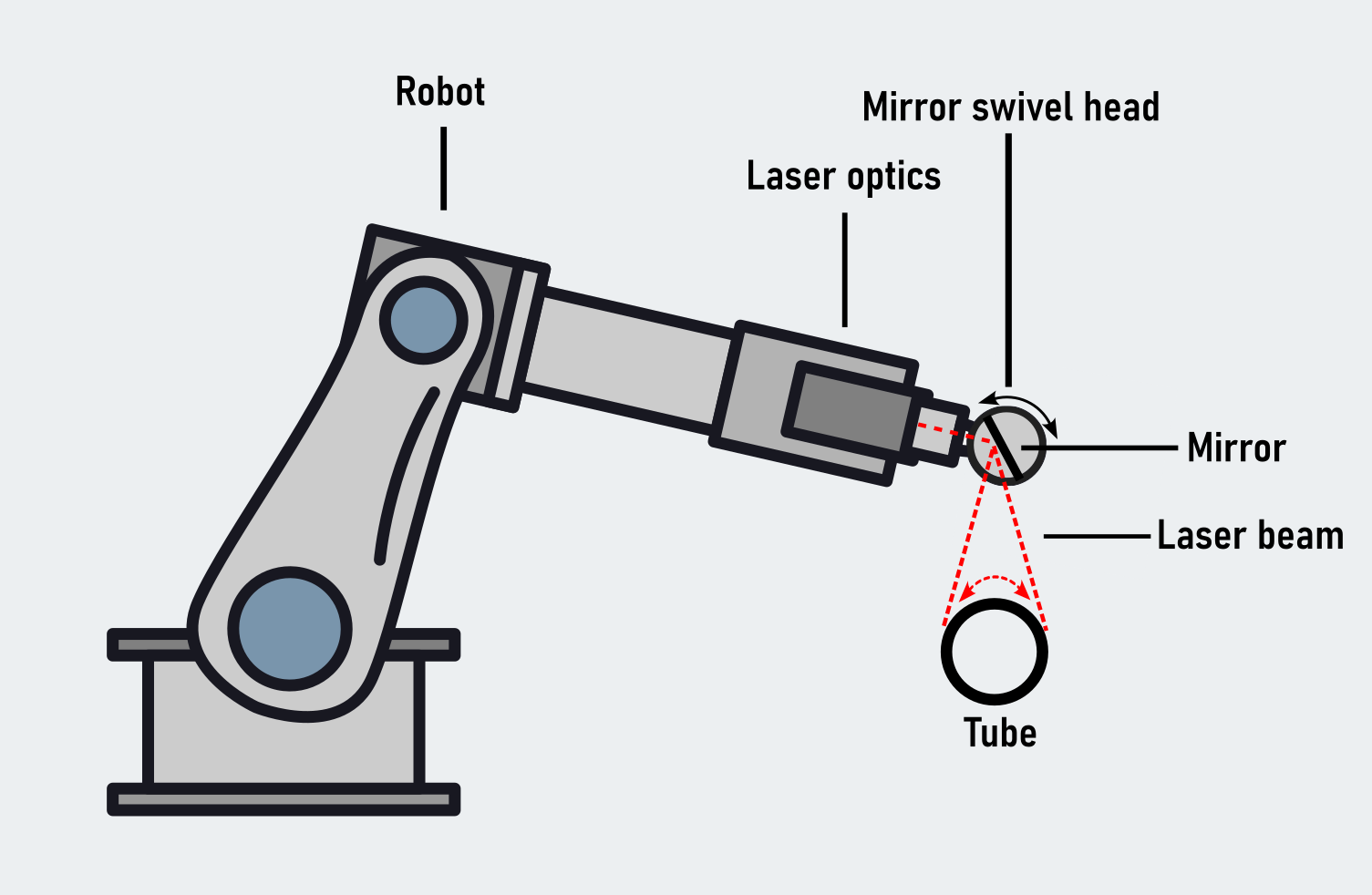
Illustration of "laser orbital welding", Photo: WFB/Raveling
ECOMAT Bremen brings together science and industry
The project originated from ECOMAT. Since the beginning of 2022, BIAS has been a partner at the research center for sustainable aviation technologies. "We regularly exchange with the various partners there, and Airbus' needs became clear. We then quickly found ourselves working together," recalls Anika Langebeck, application development at BIAS. Among other things, the engineer coordinates the institute's activities at the research center.
For her, the work at ECOMAT has already paid off after only a short time. "We as BIAS invest a lot of energy into the research center because we also get a lot back - like the LH2 tank project. It's a wonderful opportunity to make contacts with industry and exchange scientific ideas."
In addition to a dedicated space in the coworking space, the institute operates an X-ray CT facility at ECOMAT together with Faserinstitut Bremen (FIBRE). Langebeck especially appreciates the productive atmosphere at ECOMAT. "The collaboration here is very close and easy-going, and you learn insanely fast. That's a big plus for the aerospace location," she says.
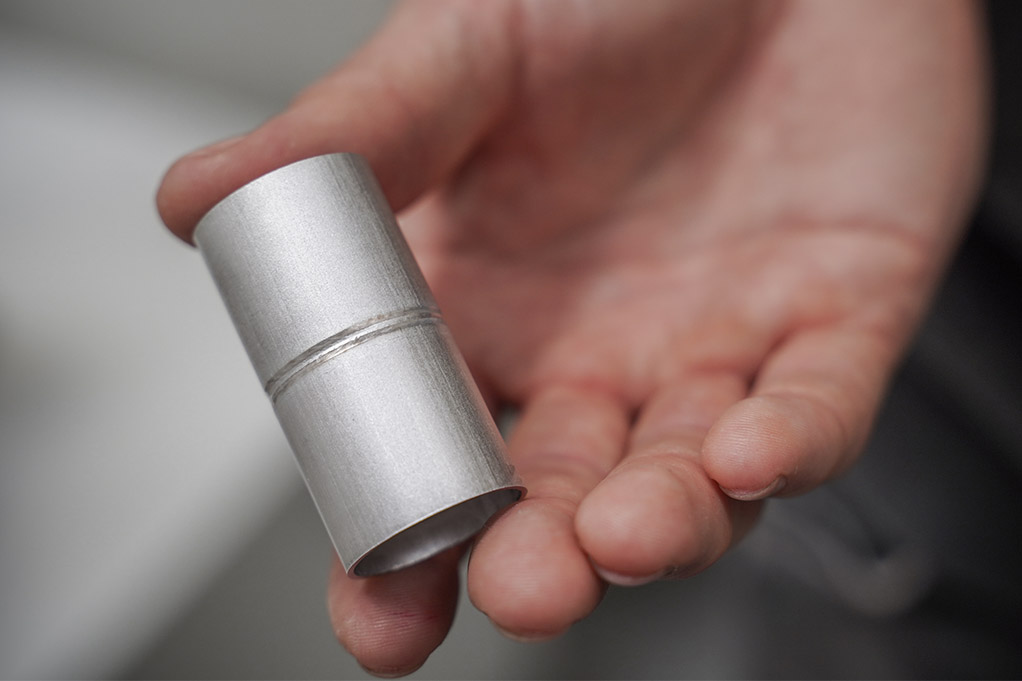
Two aluminium tubes joined by laser orbital welding, Photo: WFB/Raveling
Research project supported with Bremen and EU funds
"LH2-Tank" is one of three research projects funded by the Aerospace Research Program of the State of Bremen as part of the "Next Green Aircraft" program and supported by the European Union under ERDF REACT funds. The program has a total volume of 2.5 million euros.
Funding was implemented by BAB - Die Förderbank für Bremen und Bremerhaven. "The cooperation with the grant provider was very pleasant and unbureaucratic. The aerospace research program is a real success concept for Bremen and enables application research that advances the location," Langebeck is convinced.
With the proof of feasibility, the project is now complete. The next step is industrial implementation. In addition, BIAS plans to scientifically exploit the research results itself. "As researchers, it is of course our aspiration to advance the scientific community with our ideas. Our new welding optics are versatile and we are certainly only at the beginning of the possibilities of this process," adds Mattulat.
